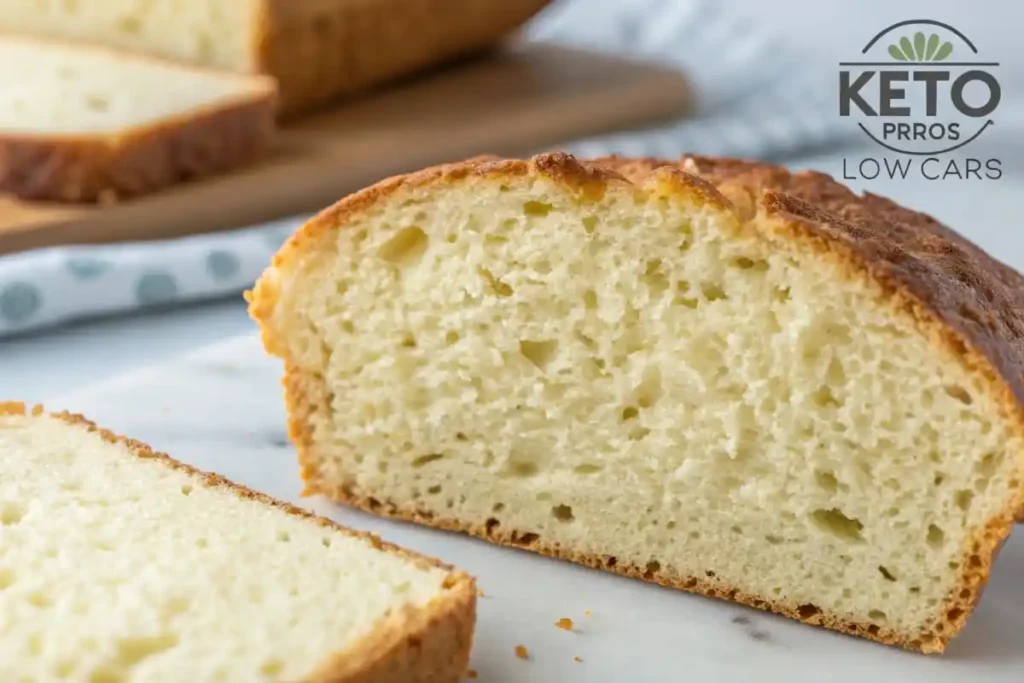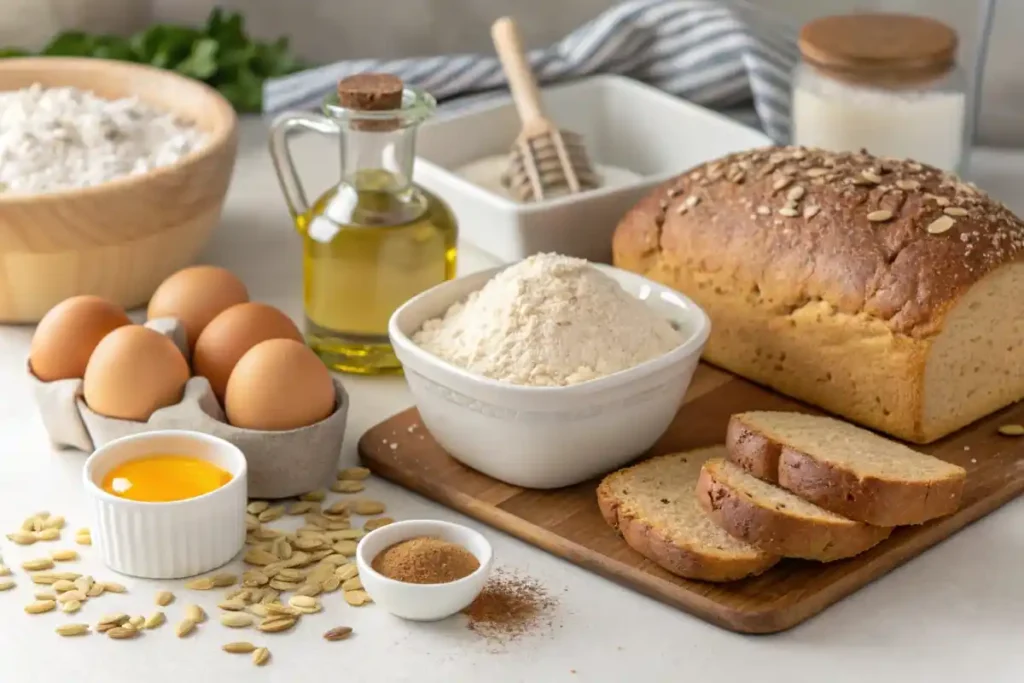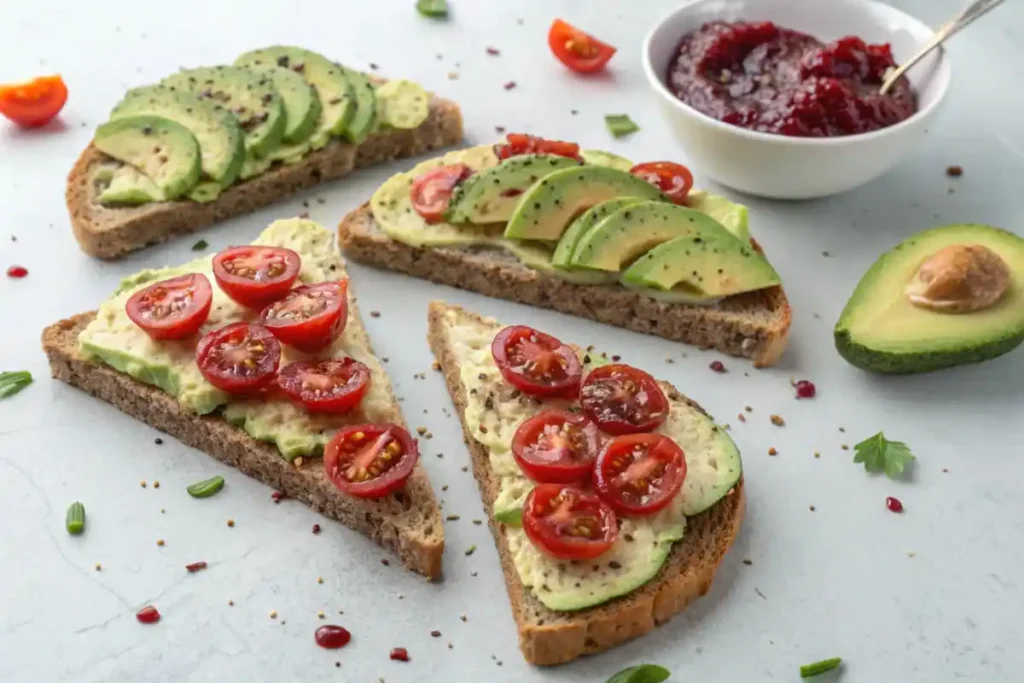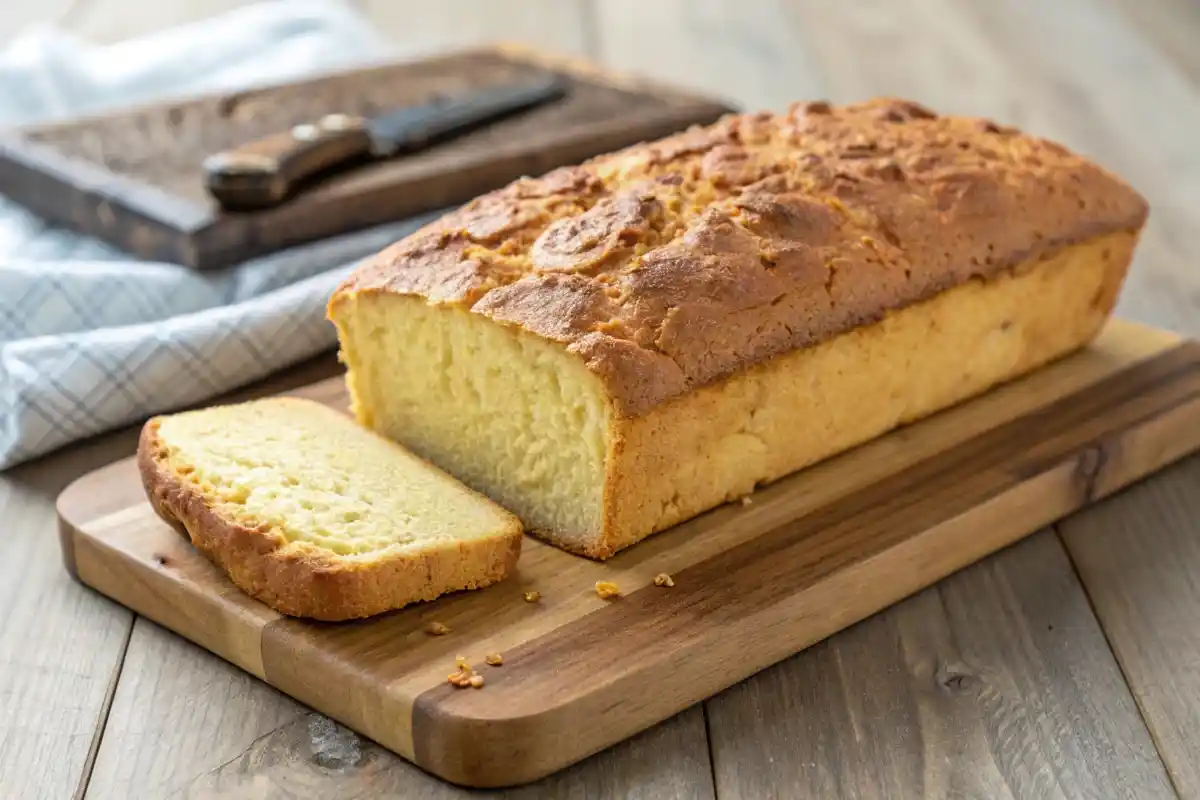Are you longing for bread that fits your healthy lifestyle but worried about carbs? Look no further. Low carb bread solves that problem by letting you enjoy a slice (or two) without the usual carb overload. It provides a tasty alternative for anyone watching blood sugar levels, following a keto plan, or simply wanting to adopt healthier eating habits. Below, you will find the entire scoop on this versatile baked delight, along with tips, fun recipe ideas, a lighthearted joke, and a detailed FAQ section. Let’s dive in!
Initial Overview of Low Carb Bread
At the present time, many people crave classic bread’s comforting taste. However, traditional loaves come loaded with carbohydrates that may disrupt diets or blood sugar control. Low carb bread offers a solution by replacing high-carb flours with ingredients like almond flour, coconut flour, flaxseed meal, and high-fiber additives. Hence, you get fewer net carbs, yet maintain a delightful crumb and flavor.
In contrast to conventional wheat bread, low carb bread typically minimizes spikes in glucose. Therefore, it helps individuals who want to manage weight or adopt a healthy lifestyle. Furthermore, you can experiment with multiple recipes because there are numerous variations available. For instance, some people prefer a higher protein content or a gluten-free approach, while others like to keep it purely grain-free. Whatever your preference, it’s possible to find a low carb bread that tastes great and fits your nutritional needs.
Because flavor is so important, bakers often combine different flours and seeds. To demonstrate, you might try a combination of almond flour and flaxseed for added texture and healthy fats. To heighten the taste, you can add seasonings like garlic, herbs, or even a pinch of your favorite spices. In the meantime, if you stick with neutral flavors, your bread will pair well with both sweet and savory toppings.
What Is Low Carb Bread?
Low carb bread is a loaf containing significantly reduced carbohydrates per slice compared to conventional bread. Often, it has extra fiber and uses alternative flours or seeds. This shift in ingredients preserves a satisfying, bread-like texture while slashing the net carb count. Some brands also fortify their bread with protein or essential nutrients. Therefore, you can make a sandwich or toast without sacrificing your health goals.
Key Qualities to Look For
- Minimal net carbs (usually 1–5 grams per slice)
- High fiber content
- Moderate or high protein
- Absence of refined sugars
- Minimal additives or preservatives
When shopping for packaged low carb bread, always check nutrition labels. Because recipes vary, you might find one brand with more fiber or protein than another. Eventually, you will discover the perfect option for your tastes.

Nutritional Data for Low Carb Bread
In the table below, you will see approximate nutritional values for one slice (about 1 ounce or 28 grams) of typical low carb bread. This data can vary, but it will give you a general idea of what to expect when you incorporate this bread into your day.
| Nutrient | Amount per Slice |
|---|---|
| Calories | 90–100 kcal |
| Carbohydrates | 3–6 g |
| Fiber | 2–4 g |
| Net Carbs | 1–2 g |
| Protein | 5–7 g |
| Fats | 3–5 g |
| Sugar | <1 g |
| Important Vitamins & Minerals | B vitamins, magnesium, and iron (varies by brand) |
Because this bread is made with alternative flours and fiber-rich seeds, you will notice higher protein and fiber content compared to standard loaves. In addition, the low net carb count makes it suitable for keto, diabetic-friendly, or weight management diets.
Top 7 Benefits of Low Carb Bread
1. Supports Weight Management
Lowering carbohydrate intake can help stabilize blood sugar, which in turn curbs cravings. Low carb bread becomes a strategic option for those watching their waistline. In contrast, classic bread often spikes blood sugar, potentially leading to additional hunger and overconsumption. Consequently, substituting a lower carb alternative can aid in portion control and mindful eating.
2. Maintains Better Blood Sugar Levels
Because of the minimal net carbs, low carb bread helps maintain steady glucose levels. High-carb foods typically cause sharp sugar spikes followed by rapid drops. However, this alternative smooths out those fluctuations. Therefore, it is particularly beneficial for people managing diabetes or insulin resistance.
3. Increases Dietary Fiber
Fiber is vital for digestive health, and low carb bread often includes high-fiber ingredients like flaxseed or psyllium husk. Furthermore, fiber helps you feel full longer. In the meantime, it can reduce cholesterol and improve gut health. Hence, a single slice can offer a decent fiber boost to your diet.
4. More Protein Content
Many low carb bread recipes feature protein-rich flours (e.g., almond flour) or added protein from egg whites. Therefore, each slice can be more nutrient-dense than standard breads. Adding more protein to your day can support muscle health, satiety, and overall wellness.
5. Versatile Ingredient Options
You can find a wide variety of flavors and textures. For instance, some are seeded and crunchy, while others are fluffy and soft. As a result, you can easily switch between different brands or homemade recipes to keep meals interesting. Because variety is the spice of life, you needn’t feel bored with your daily slices.
6. Adaptable to Meal Plans
In addition, low carb bread works with many diets such as keto, paleo (if grain-free), and gluten-free (when using special flours). Furthermore, you can top it with cheese, sugar-free jam, or avocado to customize your macros. Eventually, you’ll figure out the best approach to incorporate it into your plan.
7. Satisfies a Bread Craving
It’s challenging to eliminate bread entirely when you crave that classic slice in the morning. However, you can enjoy low carb bread as toast, a sandwich, or even grilled cheese. In other words, you won’t miss the comfort of bread, and your routine can stay pleasantly familiar.
5 Tasty Variations of Low Carb Bread
If you want to bake your own, there are many ways to personalize your loaf. For example, you can choose one of the following variations. Each option provides a distinct flavor, texture, and nutrient profile.
- Almond Flour Bread
Almond flour imparts a slightly nutty taste. Additionally, it’s an excellent source of healthy fats and vitamin E. For instance, you can boost flavor by adding a sprinkle of sunflower seeds or hemp seeds on top. - Coconut Flour Bread
Coconut flour absorbs plenty of liquid, resulting in a moist yet airy texture when done correctly. Because of its naturally sweet undertone, you can pair it with savory spreads or sugar-free nut butter. - Flaxseed Meal Bread
Flaxseed meal contributes a hearty flavor and is a fantastic source of omega-3 fatty acids. Therefore, it’s a popular choice for those seeking extra nutrition. Flaxseed also helps bind the dough, creating a sturdy slice. - Psyllium Husk Bread
Psyllium husk is high in soluble fiber. In contrast to other flours, it helps produce a cohesive dough. In addition, it gives the bread a chewy bite reminiscent of traditional wheat bread. - Mix-and-Match Grain-Free Bread
For those who love variety, mixing almond flour, coconut flour, and flaxseed meal can deliver a unique taste. Furthermore, you can add herbs or spices like rosemary, oregano, or cumin for extra pizzazz.
A Quick Laugh (Mid-Article Joke)
Here’s a little humor to lighten your baking adventures:
“Why did the low carb bread get invited to every party?
Because it was such a ‘crumby’ friend that nobody felt guilty about having it around!”
It may sound cheesy, but hey, at least low carb bread won’t weigh you down if you can’t help but indulge.
How to Make Homemade Low Carb Bread

Before finalizing your decision about which variation to try, let’s explore the basic method for a homemade loaf. First, preheat your oven to the suggested temperature in your recipe (often around 350°F). Second, combine your dry ingredients (e.g., almond flour, coconut flour, baking powder) in one bowl. In contrast, whisk eggs, melted butter, or a healthy oil in another bowl. Then, stir the wet ingredients into the dry mixture.
Because low carb bread recipes often require psyllium husk or xanthan gum to improve texture, do not skip those components. Eventually, you pour the batter into a greased loaf pan. Bake for 30–45 minutes, depending on the recipe. In the meantime, a quick toothpick test helps you check if it’s fully done. Cool before slicing to preserve the crumb structure.
Choosing the Best Low Carb Bread Ingredients
Selecting quality ingredients is crucial. Therefore, opt for:
- Fresh eggs for binding and moisture
- High-quality flours (almond, coconut, or flaxseed) to retain flavor
- Natural sweeteners like stevia or erythritol (if you prefer a sweeter loaf)
- Psyllium husk or xanthan gum for elasticity
Because artificial additives can impact flavor, keeping it simple yields the best results. Furthermore, if you want to cut down on calories, consider using egg whites instead of whole eggs. However, note that egg yolks add richness and nutrients, so that choice is personal preference.
Simple Serving Suggestions

Low carb bread slices can be served in countless ways. For instance, if you enjoy sweet flavors, spread sugar-free jam or peanut butter. In contrast, if you prefer savory notes, top a slice with avocado and a sprinkle of salt. Additionally, you could layer grilled chicken and veggies for a filling sandwich.
Great Pairings:
- Cream Cheese and Smoked Salmon
For a protein boost, pair with smoked salmon or turkey slices. - Tomato Slices and Mozzarella
Drizzle a hint of extra virgin olive oil, sprinkle oregano, and enjoy. - Nut Butter and Berries
Use sugar-free berry puree or fresh berries for a delightful twist. - Egg Salad or Tuna Salad
Spoon your favorite salad onto toasted low carb bread for a hearty meal.
In contrast to typical bread, you’ll quickly notice the difference in how you feel after mealtime. Because you cut down on carbs, you might experience fewer energy crashes and remain satisfied longer.
Frequently Asked Questions
What can I replace bread with?
Because some people avoid bread altogether, they explore veggie-based or protein-based alternatives. For instance, lettuce wraps or portobello mushroom caps can stand in for a sandwich bun. In addition, you might use egg thins or coconut wraps if you need a flexible, foldable substitute. However, low carb bread remains a top choice for taste and convenience. Hence, you can skip your typical high-carb loaf and still enjoy a “bread” experience.
Is sourdough bread less carbs?
In contrast to low carb bread, standard sourdough bread does have fewer carbs than some white breads. However, it’s not typically low enough for a strict keto plan or very low-carb diets. The fermentation process does reduce carb content slightly. Yet sourdough can still pack around 15–20 grams of carbs per slice. If you need something more suitable for a low-carb lifestyle, low carb bread is still the best bet.
Which bread is for keto?
Some store-bought varieties specifically label themselves as “keto bread.” These are basically types of low carb bread designed to keep net carbs minimal. Many manufacturers rely on high-fiber flours and seeds to lower total carbs. In the meantime, you can craft homemade options with almond or coconut flour. Essentially, any recipe with net carbs around 2–3 grams per slice can qualify as keto-friendly.
Final Tips for Low Carb Bread
- Store It Properly
Because homemade bread lacks preservatives, store it in the fridge or a cool spot. For longer storage, slice the loaf and freeze it in individual portions. Therefore, you can reheat it quickly whenever you crave a slice. - Slice Thinly
Thinner slices help extend each loaf. Furthermore, you’ll naturally reduce calorie intake while keeping the net carbs low. Therefore, you can use it for sandwiches or quick snacks without overdoing portion sizes. - Experiment With Ingredients
In addition, try substituting almond flour with sunflower seed flour or add nuts and seeds for extra crunch. Eventually, you might discover a signature blend that becomes your go-to recipe. - Toast for Better Texture
If you find certain loaves to be slightly dense, toasting can enhance crispness. Because some low-carb recipes may produce a sponge-like crumb, a quick toast can elevate the flavor and mouthfeel. - Read Labels Carefully
Always check the ingredient list of store-bought loaves. For instance, some brands may sneak in extra starches or filler ingredients that spike carbs. In contrast, others remain transparent with their net carb counts. - Pair with Healthy Toppings
For a balanced meal, top your low carb bread with nutrient-dense foods. Think fresh avocado, lean protein, or a low-sugar spread. Consequently, you can craft a satisfying breakfast, lunch, or dinner. - Mind the Serving Sizes
A single slice typically provides enough nutritional benefits. However, portion sizes differ among individuals. In contrast, if you are on a strict plan, keep an eye on how many slices you eat per day. - Keep Trying New Options
Because there are many recipes out there, don’t be discouraged if the first brand or recipe isn’t your favorite. Eventually, you’ll find your perfect match that offers amazing taste and nutrition.
By following these tips, you can maximize the taste and health perks of low carb bread. Above all, remember to experiment and enjoy the process. After all, a healthy lifestyle should be both beneficial and fun.
Congratulations on exploring the world of low carb bread! Keep these insights handy, and your journey to delicious, guilt-free bread will be a breeze, check this 30 grams of protein breakfast
